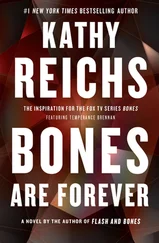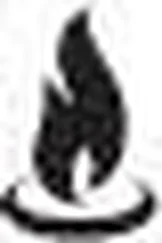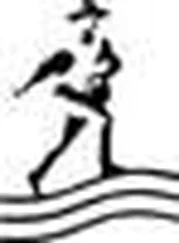KATHY REICHS - 206 BONES
Здесь есть возможность читать онлайн «KATHY REICHS - 206 BONES» весь текст электронной книги совершенно бесплатно (целиком полную версию без сокращений). В некоторых случаях можно слушать аудио, скачать через торрент в формате fb2 и присутствует краткое содержание. Жанр: Триллер, на английском языке. Описание произведения, (предисловие) а так же отзывы посетителей доступны на портале библиотеки ЛибКат.
- Название:206 BONES
- Автор:
- Жанр:
- Год:неизвестен
- ISBN:нет данных
- Рейтинг книги:3 / 5. Голосов: 1
-
Избранное:Добавить в избранное
- Отзывы:
-
Ваша оценка:
- 60
- 1
- 2
- 3
- 4
- 5
206 BONES: краткое содержание, описание и аннотация
Предлагаем к чтению аннотацию, описание, краткое содержание или предисловие (зависит от того, что написал сам автор книги «206 BONES»). Если вы не нашли необходимую информацию о книге — напишите в комментариях, мы постараемся отыскать её.
206 BONES — читать онлайн бесплатно полную книгу (весь текст) целиком
Ниже представлен текст книги, разбитый по страницам. Система сохранения места последней прочитанной страницы, позволяет с удобством читать онлайн бесплатно книгу «206 BONES», без необходимости каждый раз заново искать на чём Вы остановились. Поставьте закладку, и сможете в любой момент перейти на страницу, на которой закончили чтение.
Интервал:
Закладка:
“With predictable results,” Ryan said.
“Whether it’s bad methodology, sloppy performance, or intentional misconduct, jurors can’t always spot junk science. If an expert wears the white lab coat, it’s science.”
Returning to the couch, Ryan sat closer.
“Cops and lawyers have the same problem,” he said. “How are we average joes supposed to know who’s legit?”
“That’s the point of board certification. Every field has it now. The American Board of Forensic Anthropology, Engineering, Entomology, Odontology, Pathology, Toxicology, etc. Accreditation is a rigorous process.
“Board certification isn’t a perfect answer, Ryan. Sure, some incompetents slip through, just as in law or medicine. But it’s a start. Those letters behind a scientist’s name aren’t just for show. They’re hard-earned. And they’re a message that an expert has undergone peer scrutiny and meets a high set of ethical standards. And being certified in one field doesn’t mean you’re an expert in another.”
“Briel’s not certified in forensic anthropology.”
“Of course she isn’t. It takes a PhD and years of experience to qualify for ABFA candidacy. Being a pathologist doesn’t make you an anthropologist, or vice versa.”
For several moments we listened to the hiss and pop of the logs.
My eyes drifted to a bouquet on the dining room table. LaManche. His gift had been the first to arrive.
“This would never have happened on LaManche’s watch,” I said. “He’d never use a noncertified expert.”
“The old man would have seen through Briel,” Ryan agreed.
“I hope he’s doing well,” I said.
“So do I.”
Ryan took my hand. Firelight danced in his eyes and bathed his face with a warm, honey glow.
“Are we, buttercup? Doing well?”
I hesitated.
“Yes, dandelion.”
I smiled.
“Very well, indeed.”
FROM THE FORENSIC FILES OF DR. KATHY REICHS FROM THE FORENSIC FILES OF DR. KATHY REICHS CAMELOT? OR SCAM A LOT?
In this special essay, Kathy Reichs discusses the imperfect relationship between science and the criminal justice system.
“ How many guilty have gone free and how many innocent have been convicted? ” Why does Tempe ask that of Ryan?
She’s worried about bad forensic science.
A lot of us are.
Today, science is a routine and crucial tool of the criminal justice system. A latent fingerprint places a defendant at a crime scene. DNA from sperm links an accused to a rape victim. Chemical analysis determines that a drug is illegal. An autopsy establishes that a death is homicide.
The forensic science community includes a wide array of practitioners: anthropologists, biologists, chemists, entomologists, odontologists, pathologists. On television these scientists are portrayed as knights in shining lab coats.
No question. Science is powerful. But does it always smite with the unerring stroke of Excalibur? Is every expert a gallant champion for justice and right?
Recent findings suggest things aren’t perfect in Camelot.
Thus Tempe’s unease.
“ Whether it’s bad methodology, sloppy performance, or intentional misconduct, jurors can’t always spot junk science, ” she says.
Tempe speaks of the Innocence Project, a national litigation and public policy organization dedicated to finding justice for those wrongfully imprisoned. Numbers have risen since her fireside chat with Ryan. As of this writing, 234 convicted persons in the United States have been exonerated through DNA testing.
How could our courts err in so many cases?
Each “forensic science” has its own methodologies, technologies, practices, and standards. There is significant variability with regard to reliability and potential for error. Some specialties are analytical and laboratory based: DNA analysis, toxicology, drug analysis. Terra firma. Others rely on pattern interpretation: fingerprints, hand writing, tool and bite mark analysis. Shakier ground.
“ If an expert wears the white lab coat, it’s science, ” Tempe says. She is worried about testimony based on faulty science, on imperfect testing and analysis, or on imprecise, exaggerated, or false claims.
Examples abound. An expert in Illinois relocated to Texas testified on lip print analysis, an anthropologist on identification through shoe prints. Neither methodology had been validated. Using goggles and a blue laser, a dentist in Mississippi identified bite marks, scratches, and other injuries that no one else saw. His results can’t be photographed or reproduced.
A chemist in Tennessee, later Texas, routinely presented inconclusive findings as conclusive, altered laboratory records, and reported scientifically impossible or improbable results. A Toronto doctor performed over a thousand autopsies on children, though he never certified in forensic pathology.
Innocent people went to jail. Mothers lost custody of their kids. Perpetrators who could have been convicted were acquitted.
Tempe doesn’t like it. And she’s not alone.
Recently, the Science, State, Justice, Commerce, and Related Agencies Appropriations Act of 2006 became law. Under the terms of the statute, Congress tasked the National Academy of Sciences with evaluating the state of forensic science in the United States. On February 18, 2009, the NAS issued its long-awaited report.
It was a doozy.
The report described disparities in forensic science operations in federal, state, and local law enforcement jurisdictions and agencies. It found that medical examiner systems vary in the extent of services and the level of expertise provided. Given these factors, the committee concluded that the reliability and quality of information arising from the forensic examination of evidence available to the legal system varies substantially across the country.
Bottom line. In America justice isn’t equally available to all. Why? Understaffing and underfunding.
The NAS report also highlighted a credentialing problem. Most jurisdictions do not require forensic practitioners to be certified by reliable legitimizing organizations. Most forensic disciplines have no mandatory certification programs internally.
Sound familiar? It’s one of Tempe’s favorite themes. Here’s what she says:
“ Board certification. Every field now has it. The American Board of Forensic Anthropology, Odontology, Entomology, Toxicology, Engineering, Psychiatry, Pathology, etc. Full accreditation requires attainment of a specified educational level, a lengthy application process, and rigorous examination. And it’s not just a one-shot deal. For continued certification, diplomates must participate in ongoing professional activities and adhere to ethical standards. ”
Among its eleven recommendations, the NAS report called for mandatory certification of all forensic scientists and medical examiners. The same way that, for example, states require lawyers to be licensed.
But back up, you say. Weren’t these issues addressed years ago by the Supreme Court?
In 1993, in Daubert vs. Merrell Dow Pharmaceuticals, Inc. , the Supreme Court ruled that a “trial judge must ensure that any and all scientific testimony or evidence admitted is not only relevant, but reliable.”
Bravo! So what’s the problem?
First, the Daubert standard applies only to federal courts and to state court systems that choose to adopt it. Second, Daubert appoints the judge as gatekeeper. But how does his or her honor distinguish legitimate forensic methodologies and their practitioners from junk science and charlatans?
Tempe’s point precisely.
“ Board certification isn’t a perfect answer, Ryan, but it’s a start. Those letters behind a scientist’s name aren’t just there for show. They’re hard-earned. And they’re a message to judges, prosecutors, law enforcement, whomever, that an expert is legit, that he or she has undergone peer scrutiny and meets a high set of standards. ”
Читать дальшеИнтервал:
Закладка:
Похожие книги на «206 BONES»
Представляем Вашему вниманию похожие книги на «206 BONES» списком для выбора. Мы отобрали схожую по названию и смыслу литературу в надежде предоставить читателям больше вариантов отыскать новые, интересные, ещё непрочитанные произведения.
Обсуждение, отзывы о книге «206 BONES» и просто собственные мнения читателей. Оставьте ваши комментарии, напишите, что Вы думаете о произведении, его смысле или главных героях. Укажите что конкретно понравилось, а что нет, и почему Вы так считаете.










